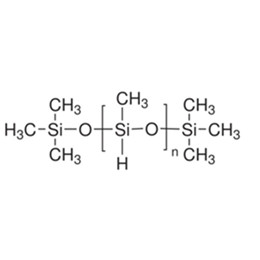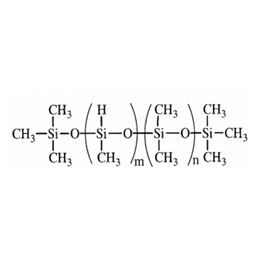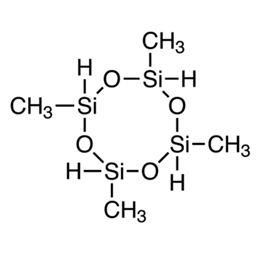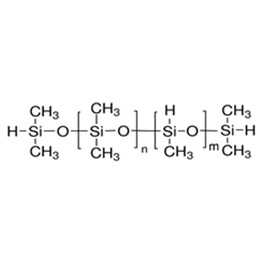Silicone sealants are mostly synthetic silicone adhesives, the main body of which is polymer, and their properties can be divided into three categories: ontological properties, process properties, and use properties (product performance). The nature of use mainly refers to the comprehensive performance of the sealant in the process of forming the glue joint to the formation of the glue joint, the performance depends on the functional requirements of the building joints for the sealant. Whether for the construction jobs envelope or building interior decoration, whether window structure or other forms of the envelope and decorative structure, they can be seen as a unit composition, then between each unit will produce joints, and due to silicone sealant has highly resistant to extreme temperatures and moisture, the vast majority of the need for building sealants to seal the filling. The rational design of building caulking cracks, the understanding of building silicone caulk and sealant, the rational selection of materials and the correct construction of building seals are essential to ensure the success of the whole process of sealing building joints. Besides, silicone sealant can be used in the cable insulation of electronic devices and various gaskets. This article collects and collates some of the common problems encountered in the actual use of neutral silicone sealants and provides corresponding industrial purposes solutions for you.
1. Why does the silicone weather-resistant sealant foam during construction?
There are many reasons for the foaming of silicone weather-resistant sealants during construction, and it is complicated. It is difficult to use one method and one result to determine the cause of foaming. The silicone structural sealant is generally injected into the factory. The environment and caulk gun operating conditions in the factory are relatively good, and it is easy to meet the external conditions required for the curing of the silicone structural sealant. Silicone weather-resistant sealants are generally completed on the construction site to complete the glue injection work. The construction site environment and operating conditions are poor, and the external conditions required by the silicone weather-resistant adhesive during the curing process are not easy to meet. Climate, environment, drywall or wood surfaces, operating conditions, and other non-human-changeable reasons have a great impact on the curing quality of silicone weather-resistant adhesives. Therefore, the limitations of the environment and multiple projects operating conditions of the silicone weather-resistant adhesive determine the main cause of foaming. Some specific situations are analyzed below.
![]()
![]()
Diagram of "drumming" phenomenon Diagram of "blistering" phenomenon
(1) Air problem during injection
Silicone weather-resistant adhesives are generally used to seal injected at the construction site, and the working conditions are poor. Workers stand on the scaffold to inject glue, the uniformity of glue injection is not easy to control, and the air is easily trapped in the glue seal gaps. After the glue is applied, the surfaces of the glue seam are scraped and pressed, and the trimming is smooth. The cushion rods in the glue seam are generally made of closed-cell polyethylene foam rods. The air wrapped in the glue seam is not easy to overflow. The outer ridge tension, the weather-resistant glue seam is generally wider and the thickness is smaller, the weather-resistant glue provides high displacement ability, the hardness is low, and the glue is very soft before curing. The tension of the compressed air slowly props up the glue seam to foam. This phenomenon is more likely to occur in the application of weather-resistant adhesives that can provide more than ±25% of the displacement capacity of the adhesive seam. On the contrary, some weather-resistant adhesives that allow lower displacement capacity have higher hardness and are thicker before curing. The tension of the compressed air wrapped in the glue sealing gaps is not easy to hold the glue to foam. Therefore, the more weather-resistant glue that can provide high displacement ability, the more attention should be paid to the uniformity of glue injection when injecting glue. The vertical glue joint can be generally injected from the bottom to the top, which can overcome some foaming phenomena. What is more important is the proficiency and responsibility of the work operator.
(2) The interface is wet during injection
When working outdoors, rain is often encountered, especially in the summer in the south area. It rains almost every day. If the interface is wet and not dry after the rain, directly inject glue. When the sun shines on the substrate and glue seam, the temperature inside the interface. When it rises, the moisture in the glue joint will evaporate, which will bulge the uncured, relatively soft glue joint. Therefore, do not blindly seek progress during construction, wait until the interface is dry, and then inject the glue to avoid the above situation.
(3) Deflate the foam stick
The cushion rods in the glue seam are generally made of closed-cell high-foaming polyethylene foam rods. Due to improper extrusion during placement, the internal airbags are ruptured and the air is released. When the glue is injected, there will be bubbles bulging or some bulging appearance, the solution to this situation, one is to cut the foam rod, and the cutting face is inward, and the other is to use an open-cell foam rod or a foamed vinyl foam rod to overcome the above situation. On the other hand, alcohol-based weathering adhesives release methanol as they cure, which reacts with some foam sticks. In such a situation, the problem can be solved by changing the foam stick or ketoxime-type sealant.
(4) Sun exposure when the glue is not cured
The silicone glue cannot be exposed to the sun before it is cured, especially if it is exposed to the sun just after the glue is injected, it will cause honeycomb bubbles inside the glue seam, which will cause the external bulge of the glue seam. It will be more noticeable when using keto glue. In hot summer construction, this situation is not easy to overcome. Avoid sun exposure when using glue injection, which will overcome some blistering. Specific method: inject glue on the west or north side of the building in the morning, and inject glue on the east or south side of the building in the afternoon. After the glue is injected, the glue has been cured for a period of time, and the surface has been crusted. When it is exposed to the sun again, it has a certain resistance and can overcome some blistering.
(5) The surface temperature of the substrate is too high
When the silicone adhesive is cured, the temperature of the material to be bonded cannot exceed 50 °C. This conclusion has been recognized by the many best silicone sealant manufacturers. When the surface temperature of the substrate exceeds 50 ℃, the glue will cause foaming in the glue seam. When the weather-resistant caulking of the metal sheet curtain wall is used, the above situation will be encountered. In hot weather, when the metal plate is exposed to the sun, especially the surface temperature of the aluminum plate will reach 80 ℃, at this time, the glue injection can easily cause the glue seam to foam. Therefore, the latter half of the afternoon or cloudy days should be selected to improve the above situation.
(6) The temperature difference between day and night is large, and the thermal expansion and contraction of the interface are large.
This situation is more likely to occur when the aluminum curtain wall is injected with glue. The aluminum plate is a material with a large linear expansion coefficient. In the northern region of my country, the temperature difference between day and night is large in spring or autumn, and when the sun directly hits the aluminum plate at noon, the surface temperature of the aluminum plate can be as high as 60℃-70℃, and the temperature at night drops to about 10℃. Large aluminum plates have large thermal expansion and cold contraction, and the joint displacement is large. After the weather-resistant glue is caulked, the actual displacement of the joint is borne by the glue joint. During the curing process, excessive and repeated expansion and contraction displacement will cause Causes foaming in the glue seam, so avoid the noon when the direct sunlight is strongest at noon when injecting glue, in order to improve some of the above-mentioned foaming conditions.
(7) The climate in the northern region is dry in spring
Silicone sealants use moisture in the air to chemically react into elastic sealing materials. There is a close relationship between the humidity in the air and the curing speed. The climate in northern my country is dry in spring. After the silicone sealant is injected, the curing time is very long. The uncured silicone sealant is easily affected by the external environment, providing opportunities for various foaming phenomena.
2. Why is the deep curing of sealant slow?
First of all, the objective conditions of sizing have a great influence on the deep curing speed. For example, the construction environment, temperature and humidity have a great influence on the curing speed. Too low temperature and too high humidity will significantly slow down deep curing. In addition, there is ventilation on the construction site. If the air circulation is not smooth, it will also affect the deep curing. In addition, the design of the glue joint also has a great impact on the deep curing. When the width-to-depth ratio of the glue joint is inappropriate or the depth is too deep, the deep curing will be slower; in general, the deep curing will be slightly slower, and it is not suitable for actual engineering use without quality problems (such as foaming, internal curing, etc.). Influence, the curing period of the test piece stipulated by the national standard is 21 days, and the thickness of the test specimen is equivalent to that of the actual project, which means that the complete curing time recognized by the national standard requires 21 days, and the curing time of our reaction is far less than that of the actual project. 21 days (generally more than 5-7 days, it is reflected as slow drying); in addition, we believe that too fast curing of the sealant is not very good for long-term use, because too fast curing is not conducive to releasing the stress caused by the temperature during the curing process. hidden danger. For example, the curing time of concrete is limited. If it is too fast, it will cause stress concentration and cracking.
3. Why does the sealant crack after curing?
There are very few cracks in the middle of the real adhesive strip after curing. Because there are too few cases, and some objective situations are not very clear, it is impossible to accurately judge the cause. The cracking mentioned here mainly refers to the degumming phenomenon on one side of the substrate caused by poor adhesion to the substrate, also called cracking. There are mainly the following reasons (except for inferior glue): First, the compatibility is not done well or the compatibility test is not done at all, that is, the incompatibility between the glue and the base material leads to cracking. 2. The reason for the construction is that the surface of the substrate is not cleaned or improperly constructed, such as construction before the solvent is dry or contaminated after a long time after cleaning. Most of the cracking of sealant after curing is caused by improper construction.
![]()
4. The surface of the adhesive strip is wrinkled and uneven after curing, why?
This situation occurs more often when sizing vertical joints. The reason for this analysis should be that in the early stage of sizing, the wetting speed of the glue on the surface of the substrate is slow, that is, the initial adhesion is poor, resulting in the sealant due to its own weight. The phenomenon of wrinkling and unevenness caused by sagging; it is recommended to extend the trimming time as much as possible within the allowable range of construction during construction, and at the same time change the trimming operation, use a scraper to trim the edge from the lower end of the glue seam upwards; be careful not to over-extrude when trimming, otherwise It is easy to cause deformation of the cushion foam stick, and then the foam stick will gradually recover, causing the sealant to bulge as a whole.
5. Why does the porcelain white sealant turn yellow and red?
This happens occasionally with alcohol-based adhesives. The reason for analysis may be the unstable quality of the additives added, or the contamination of accessories or other materials that come into contact with the cured adhesive strip.
6. Why does the neutral transparent adhesive (ketoxime type) turn yellow or even red after curing?
Ketoxime transparent glue (including light-colored glue) will turn yellow to varying degrees after curing for about 20 days, and with the increase of time, the yellowing will tend to intensify. The yellowing of ketoxime transparent glue here is not the existence of individual manufacturers It is a problem that exists in the whole industry of a product, including foreign manufacturers. After analysis, it may be due to the addition of a coupling agent with an amino group. Although yellowing is an inherent defect of current products, the curing environment has a great influence on yellowing. First of all, ketoxime-type transparent glue cannot coexist peacefully with acid glue and alcohol-type glue. In less than three days, the ketoxime transparent glue will turn yellow seriously. In addition, placing the cured ketoxime transparent glue in a dark and damp corner will also cause it to turn yellow until it turns red.
7. Why does the sealant have poor adhesion to some building materials (such as aluminum, aluminum-plastic panels, profile steel, etc.)?
This phenomenon is explained in two sentences "the diversity of building materials and the instability of sealants". First of all, let’s talk about the diversity of building materials: there are many kinds of building materials on the market now, such as aluminum, there are sprayed aluminum and anodized aluminum. Sprayed aluminum is divided into electrophoresis, fluorocarbon and other coatings, and the surface properties are different. Therefore, it is necessary to know the advantages and disadvantages of adhesion through experiments. The general raw material of plastic steel profiles is PVC (polyvinyl chloride), and also added Plasticizers and fillers, but now there are many manufacturers, and the materials used are different, so there is also great uncertainty. Let's talk about the instability of sealant: as a chemical product, many factors affecting the quality cannot be directly observed, so we recommend that a compatibility test be done before construction.
8. Why does the weather-resistant adhesive sometimes dry too fast, resulting in insufficient trimming time?
The surface-drying time of weathering glue is 30-40 minutes, which is not short for normal construction, but when the construction environment changes greatly (such as high temperature), the surface-drying time will become faster, so there will be problems that cannot be repaired. In the same way, when the temperature drops, the surface dryness will be prolonged, so if the surface dryness time is moderate when the temperature is high, the surface dryness will be very long when the ambient temperature is lowered, which will make the tack-free time longer, thus affecting the Project acceptance. Therefore, to reduce the influence of fast surface drying, it can be improved by adjusting the number of trimming appropriately.
9. Why is there unevenness such as variegated lines after the sealant is extruded?
Such phenomenon is mainly caused by pollution in the production or packaging process, and it is a production quality control problem.
10. Why is a small number of brittle solids sometimes found near the bottom of the sealant bottle?
This is a phenomenon that basically exists in products now. The reason for the formation is that the bottom cap and the bottle body are not tightly sealed, resulting in a small amount of glue curing nearby, and when the glue is cured, it will form a brittle and hard solid when it contacts with the plastic. This phenomenon does not occur in contact with other materials. And there will be no quality problems.
11. Why are there particles in the sealant?
If there are large particles or large rubber in the sealant, it is a control problem in the production process, which can be solved by strengthening management and control. If there are small particles in the sealant, they need to be treated differently. There are two main cases: one is the powder particles because all glues need to be added with reinforcing fillers. The most commonly used are calcium carbonate and silica, both of which are solid. Substances, while solids and liquids are mixed because the solid particles are small, the surface energy can easily form aggregates, so it is difficult to completely disperse in the liquid to form some small particles. The basis for judging the particles of powder is to pick out the small particles in the glue and grind them by hand to see if they are still there. The glue itself has level properties, and the surface can be slowly leveled and covered with some small particles, and the glue application is a super-close observation. If it is viewed from a distance after construction (about a foot away), many particles are difficult to find. When the particles are still or become smaller after being rolled by hand, it is skinning, which needs to be avoided in production, but there is also a probability of occurrence.
XJY Silicones - First choice raw material supplier of silicone potting adhesives
| XJY Silicones, one of China's leading Silicone MQ resin and VMQ silicones manufacturers, has 30+ years of R&D and manufacturing experience and 15+ related patents and technical assistance in the silicone industry. XJY Silicones is delivering tailored silicone sealant solutions, we can provide hydrogen-containing silicone oil and vinyl silicone oil or VMQ silicone resin according to your applications requiring specifications. |




